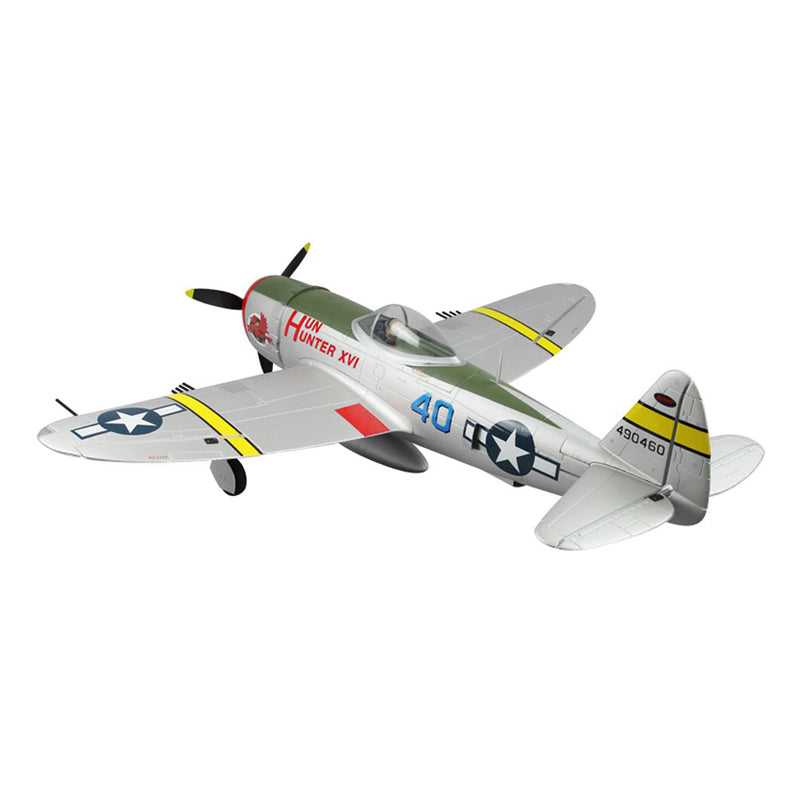Flying an RC warbird is an exhilarating experience, especially when piloting a model like the Dynam P-47D Thunderbolt V2. As a seasoned enthusiast, I’ve spent countless hours mastering the controls of various RC planes, and I’m excited to share my insights with you. In this article, I’ll guide you through the essential techniques for controlling your RC warbird effectively, with a special focus on the Dynam P-47D Thunderbolt V2.
Understanding the Dynam P-47D Thunderbolt V2
Before diving into the controls, let’s briefly discuss the Dynam P-47D Thunderbolt V2. This model is a replica of the famous World War II fighter, known for its robust design and impressive performance. The P-47D features a powerful brushless motor, a scale appearance, and excellent flight characteristics. It’s not just about aesthetics; this aircraft offers great stability and responsiveness, making it a favorite among both novice and experienced pilots.
Getting Started with the Basics
Familiarize Yourself with the Controls
To master the controls of any RC aircraft, it’s essential to understand the basic functions. The P-47D Thunderbolt V2 typically includes:
- Throttle Control: This controls the speed of the aircraft.
- Ailerons: These allow you to roll the plane left or right.
- Elevator: This controls the up and down movement of the nose.
- Rudder: This helps steer the aircraft during flight.
Spend some time getting to know these controls on your transmitter. It’s crucial to feel comfortable with each function before taking to the skies.
Pre-Flight Checks
Prior to each flight, conduct a thorough pre-flight check. Ensure that:
- The battery is fully charged and securely connected.
- All control surfaces move freely and are correctly oriented.
- The transmitter and receiver are bound properly.
- The weather conditions are suitable for flying.
Performing these checks will help prevent any surprises during your flight and ensure that your P-47D operates smoothly.
Mastering the Flight Controls
Takeoff Techniques
Taking off in the P-47D Thunderbolt V2 requires a smooth application of throttle. Here’s how I approach takeoff:
- Align the Aircraft: Position the plane on the runway, facing into the wind.
- Gradual Throttle Increase: Slowly advance the throttle. You’ll feel the plane start to pull forward.
- Lift-Off: As you reach around 60-70% throttle, gently pull back on the elevator control to raise the nose. Aim for a slight climb angle.
- Level Off: Once airborne, adjust your throttle to maintain altitude and begin your flight.
Flying Straight and Level
To fly straight and level with your P-47D, keep your ailerons and elevator balanced. If the plane starts to drift, make small adjustments to your controls. It’s crucial to practice maintaining a steady altitude and heading.
Turning Techniques
Making turns is one of the most enjoyable aspects of flying. Here’s my method for executing smooth turns:
- Bank the Aircraft: Use the ailerons to bank the plane into the turn.
- Elevator Control: As you bank, gently pull back on the elevator to maintain altitude.
- Throttle Adjustment: Depending on the turn’s sharpness, you may need to increase throttle slightly to maintain speed.
Practice makes perfect! Spend time honing your turning skills, as they are essential for flying your warbird effectively.
Landing Approaches
Landing can be one of the most challenging aspects of flying an RC warbird. Here’s a step-by-step guide to landing the P-47D Thunderbolt V2:
- Final Approach: Begin your descent about 300-500 feet away from the runway. Reduce throttle gradually to initiate the landing.
- Align the Aircraft: Make sure you are aligned with the runway and maintain a slight nose-up attitude.
- Touchdown: Aim to touch down gently on the main landing gear. Avoid flaring too high, as this can cause a stall.
Post-Flight Checks
After each flight, conduct a post-flight inspection. Check for any damage, loose connections, or battery issues. Regular maintenance will prolong the life of your P-47D and keep it flying smoothly.
Advanced Techniques for Mastering Your RC Warbird
Acro Flying and Stunts
Once you’ve mastered the basics, you may want to explore acrobatic flying. The P-47D Thunderbolt V2 is capable of impressive maneuvers. Here are some tips for getting started:
- Know Your Limits: Begin with simple maneuvers, like loops and rolls, before attempting more complex stunts.
- Practice in a Safe Area: Choose a wide-open space with minimal obstacles for practice.
- Use Proper Control Inputs: Be smooth and deliberate with your control inputs to prevent stalling or crashing.
Simulated Dogfighting
If you’re flying with friends, consider setting up a simulated dogfight. This adds an element of excitement and helps improve your flying skills. Establish rules, such as altitude limits and designated “battle zones,” to keep it fun and safe.
Night Flying
If you’re looking for a new challenge, try night flying. With the right LED lights, your P-47D Thunderbolt V2 can be transformed into a stunning night flyer. Just remember to adjust your control inputs, as visibility and perception can change in low light.
Conclusion
Mastering the controls of a radio control warbirds like the Dynam P-47D Thunderbolt V2 is a rewarding journey that combines skill, patience, and practice. From understanding the basic controls to executing advanced maneuvers, each step will enhance your flying experience.
Remember to take your time, enjoy the process, and most importantly, have fun! Whether you’re flying solo or competing with friends, the thrill of piloting a warbird is unmatched. So, strap in, take to the skies, and let your passion for flying take flight!







